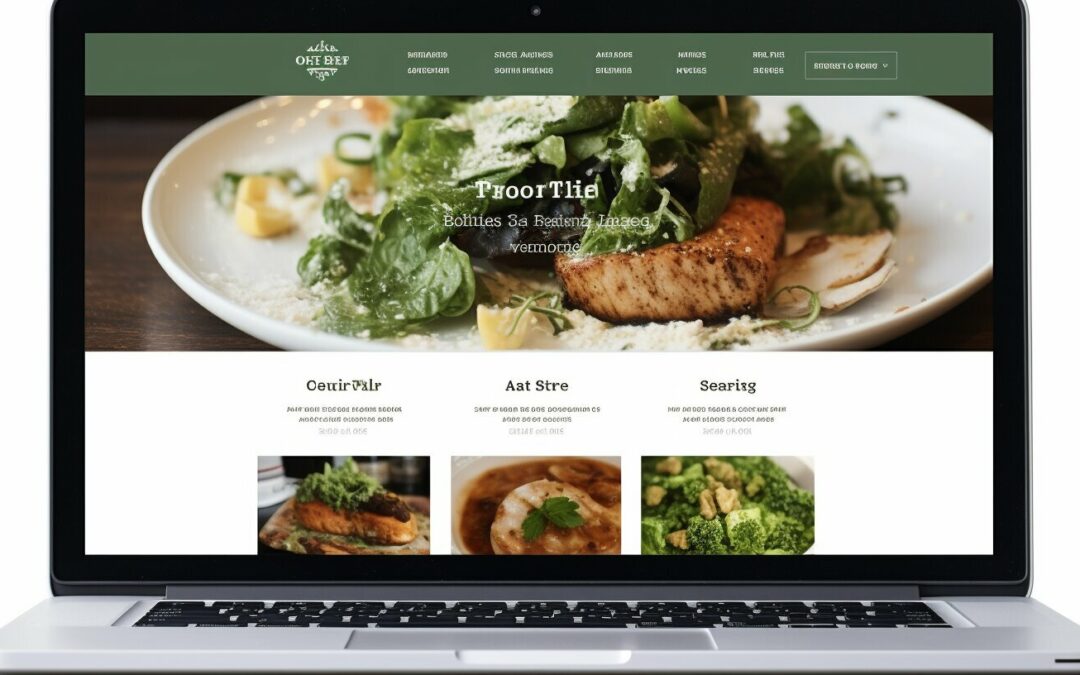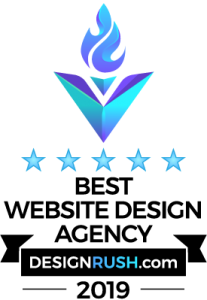Landing pages play a crucial role in maximizing your business potential and driving success. They provide a valuable opportunity to engage new visitors, showcase your offerings, and ultimately convert them into customers. In this section, we will explore the importance of landing pages in boosting business success and discuss the best practices for creating effective landing pages that drive results.
Effective landing pages offer numerous benefits for your business. They have the power to increase conversion rates, ensuring that more visitors take the desired action on your website. By providing targeted messaging and focusing on a specific offer or campaign, landing pages can simplify measurement and track the success of your marketing efforts. They also offer design flexibility, allowing you to create a visually appealing and impactful page. This flexibility extends to testing and making changes, enabling you to optimize your landing pages for maximum impact.
Creating an effective landing page requires strategic attention to several key elements. Craft a benefit-focused headline that grabs your visitors’ attention and clearly communicates the value they will receive. Choose an image that illustrates the offer or complements your messaging to further engage your audience. Well-crafted copy is essential, as it should be compelling, concise, and focused on the benefits your visitors will gain. It’s crucial to place the lead form above the fold, making it easily accessible and encouraging visitors to take action. Additionally, a clear and standout call-to-action is vital to guide your visitors towards the desired conversion.
Other best practices for effective landing pages include only asking for necessary information in your lead form, removing distractions like navigation menus, ensuring that your landing page is responsive and optimized for search engines, and using a thank you page to reinforce the value of the offer and provide additional engagement opportunities.
There are different types of landing pages that serve specific functions depending on your business goals. Lead generation pages, for example, focus on capturing valuable customer information. Click-through pages aim to direct visitors to a specific product or offer. Product detail pages provide in-depth information about a particular product or service, while squeeze pages drive urgency and encourage quick action.
When designing your landing page, simplicity is key. Keep the layout clean and uncluttered, allowing your visitors to focus on the key message and call-to-action. Use contrasting colors to draw attention to important elements, and integrate compelling content and visuals that resonate with your audience. It’s also crucial to ensure that your landing page is optimized for mobile users, as a significant portion of internet traffic now comes from mobile devices. Responsive design and mobile compatibility are vital for reaching and engaging this audience segment.
While striving to create effective landing pages, it’s important to avoid common mistakes that can hinder their effectiveness. These mistakes include lacking relevant and persuasive copy that clearly communicates the value proposition and benefits, having a weak or unclear call-to-action that doesn’t guide visitors towards conversion, not including customer reviews or testimonials to build credibility and trust, and having poor visuals that fail to capture attention. By avoiding these pitfalls, you can maximize the impact and effectiveness of your landing pages.
To inspire and guide you in creating your own effective landing pages, let’s take a look at some examples from reputable brands. Apple’s iPad Pro landing page showcases the product’s features and benefits in a visually stunning and compelling way. Reedy’s book launch page effectively highlights the book’s value and encourages visitors to make a purchase. Shopify’s ecommerce course landing page offers valuable insights and prompts visitors to sign up for the course. These examples demonstrate the power of effective landing pages and offer inspiration for your own creations.
- Effective landing pages are crucial for maximizing business potential and driving success.
- They offer numerous benefits, including increased conversion rates and simplified campaign measurement.
- Key elements of effective landing pages include a benefit-focused headline, engaging imagery, compelling copy, and a clear call-to-action.
- Different types of landing pages serve specific functions such as lead generation, click-through, product detail, and squeeze pages.
- Design your landing pages with simplicity, contrasting colors, compelling content, and mobile optimization in mind.
The Benefits of Effective Landing Pages
Effective landing pages offer a wide range of benefits that can significantly impact your business success. These high-converting landing pages provide a sneak peek into your business and engage new visitors, increasing your chances of converting them into valuable leads or customers. Let’s explore some of the key advantages of creating effective landing pages:
- Increased Conversion Rates: When designed with a clear goal in mind and compelling content, landing pages have the power to drive higher conversion rates. By focusing on a specific offer or call-to-action, you can create a targeted messaging that resonates with your audience and encourages them to take action.
- Optimized Campaign Performance: Landing pages simplify campaign measurement by providing a dedicated space to track the success of your marketing efforts. With the ability to analyze metrics such as click-through rates, form submissions, and bounce rates, you can optimize your campaigns for better performance and achieve higher ROI.
- Design Flexibility: Unlike the constraints of a website’s homepage, landing pages offer design flexibility to create a visually appealing and impactful experience. You can experiment with different layouts, colors, and elements to capture attention and guide visitors towards your desired conversion.
- Easy Testing and Changes: One of the greatest benefits of landing pages is their adaptability. You can easily test different elements such as headlines, images, and CTAs to see what resonates best with your audience. This allows you to make data-driven decisions and continually improve the effectiveness of your landing pages.
These are just a few examples of how effective landing pages can boost your business success. By implementing best practices and optimizing your landing pages, you can create a seamless user experience that maximizes conversions and drives growth.
Summary of Benefits
| Benefits | Description |
|---|---|
| Increased Conversion Rates | Landing pages focus on specific offers or calls-to-action, increasing the likelihood of conversions. |
| Optimized Campaign Performance | Dedicated measurement and tracking of landing page metrics help improve campaign performance. |
| Design Flexibility | Landing pages offer freedom in design to create visually appealing and impactful experiences. |
| Easy Testing and Changes | Testing different elements allows for continuous improvement and better results. |
Essential Elements of an Effective Landing Page
Creating an effective landing page involves incorporating several essential elements to ensure maximum impact and conversion. A well-designed landing page not only captures the attention of your visitors but also guides them towards taking the desired action. Let’s explore the key elements that make up a successful landing page.
1. Benefit-Focused Headline
Your headline should clearly communicate the unique value proposition of your offer. It should highlight the key benefit that visitors will receive by taking action on your landing page. Use persuasive language that speaks directly to the needs and desires of your target audience.
2. Compelling Visuals
Images and videos play a crucial role in capturing the attention of your visitors. Choose visuals that illustrate the offer and resonate with your target audience. A relevant and eye-catching image can significantly enhance the effectiveness of your landing page.
3. Persuasive Copy
Craft compelling and concise copy that clearly communicates the benefits of your offer. Use persuasive language, highlight key selling points, and address any potential objections. Remember to keep your copy focused on the visitor and the value they will gain.
4. Lead Form Placement
The placement of your lead form is crucial for conversion. It’s recommended to have the lead form placed prominently above the fold, ensuring that visitors can easily see it without having to scroll. Make sure the form is simple and asks for only necessary information to minimize friction.
5. Clear and Standout Call-to-Action
Your call-to-action (CTA) should be clear, compelling, and visually prominent. Use contrasting colors to make your CTA button stand out on the page. The copy on the button should clearly communicate the action you want visitors to take, such as “Download Now” or “Get Started”.
6. Relevant Offer
Align your offer with the visitor’s needs and expectations. Ensure that the content of your landing page is relevant and valuable to your target audience. This will increase the likelihood of visitors engaging with your offer and taking the desired action.
Let’s take a look at an example of an effective landing page that incorporates these essential elements:
| Landing Page Example |
|---|
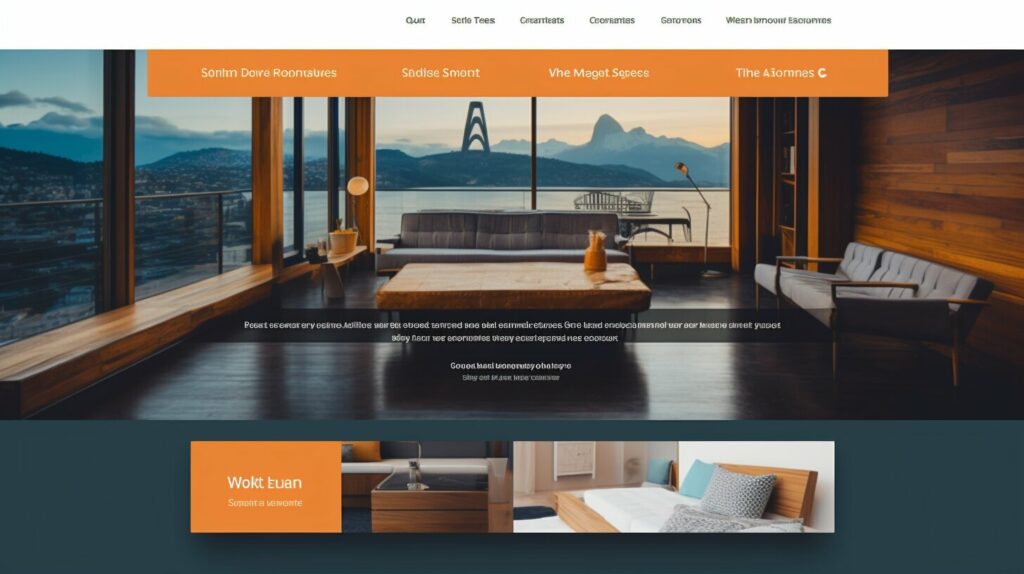 |
In conclusion, creating an effective landing page involves careful consideration of various elements such as a benefit-focused headline, compelling visuals, persuasive copy, strategic lead form placement, a clear and standout call-to-action, and a relevant offer. By incorporating these essential elements, you can maximize the impact and conversion potential of your landing pages.
Note: The provided image link for the landing page example has been added as per the instructions.
Crafting Compelling Copy for Landing Pages
Well-crafted and persuasive copy is a critical component of effective landing pages, especially in generating leads and capturing audience attention. The right words can engage visitors, convey value, and drive action. To create compelling copy for your landing page, consider the following tips:
- Start with a benefit-focused headline: Your headline should immediately grab the visitor’s attention and clearly communicate the value or benefits they will receive by taking action. Use strong, attention-grabbing language that speaks directly to your target audience. For example, “Discover the Secret to Boosting Your Business Success with Effective Landing Pages!”
- Choose compelling images: Images are powerful tools for evoking emotions and illustrating your offer. Select high-quality visuals that are relevant to your product or service and align with your brand identity. An image that showcases your offer or demonstrates its benefits can greatly enhance the effectiveness of your landing page.
- Write persuasive copy: Your landing page copy should clearly and concisely communicate the value of your offer. Use persuasive language to highlight the unique features, benefits, and advantages of your product or service. Focus on the specific pain points your target audience may have and explain how your offer can solve their problems. Use compelling testimonials or customer reviews to build trust and credibility.
- Place the lead form above the fold: The lead form is where visitors provide their contact information, so make sure it is prominently placed on your landing page. Positioning it above the fold – the visible area without scrolling – ensures that visitors can easily see and access the form, increasing the chances of conversion.

By following these tips, you can create a landing page with compelling copy that captivates your audience, generates leads, and drives conversions. Remember to continually test and optimize your copy to maximize its effectiveness and ensure it resonates with your target audience.
Additional Resources:
| Resource | Description |
|---|---|
| The Ultimate Guide to Copywriting | This comprehensive guide provides in-depth tips and strategies for crafting compelling copy that converts. |
| 10 Copywriting Formulas That Convert | Discover proven copywriting formulas that can help you craft persuasive and high-converting landing page copy. |
| The Power of Storytelling in Copywriting | Explore how incorporating storytelling elements into your landing page copy can engage and resonate with your audience. |
Designing a Winning Call-to-Action
A compelling call-to-action is a crucial element of an effective landing page, guiding visitors towards desired actions and increasing conversion rates. When designing your call-to-action, there are key considerations to keep in mind to ensure it is impactful and drives results.
First and foremost, your call-to-action should be visually striking and stand out on the page. Use contrasting colors to make it easily noticeable, and consider using a button instead of a text link to make it more clickable and interactive. Additionally, make sure the size of your call-to-action is proportionate to the rest of the page, so it doesn’t get lost in the design.
Next, the copy and messaging of your call-to-action should be clear and compelling. Use action-oriented language that clearly communicates the value or benefit of taking the desired action. For example, instead of a generic “Submit” button, try using more specific and persuasive phrases like “Get Your Free Ebook” or “Start Your Free Trial.”
Lastly, make sure your call-to-action is placed strategically on the landing page. Position it above the fold, meaning it’s visible without scrolling, so visitors can easily find it and take action. Consider placing it near a key piece of information or next to a persuasive image that reinforces the value of your offer.
| Key Points: |
|---|
| Visual appeal: Use contrasting colors and consider using a button instead of a text link. |
| Compelling copy: Use action-oriented language that communicates the value or benefit of taking the desired action. |
| Strategic placement: Position the call-to-action above the fold and near persuasive elements on the landing page. |
By following these best practices for designing a winning call-to-action, you can effectively guide visitors towards the desired actions and boost conversion rates on your landing pages.
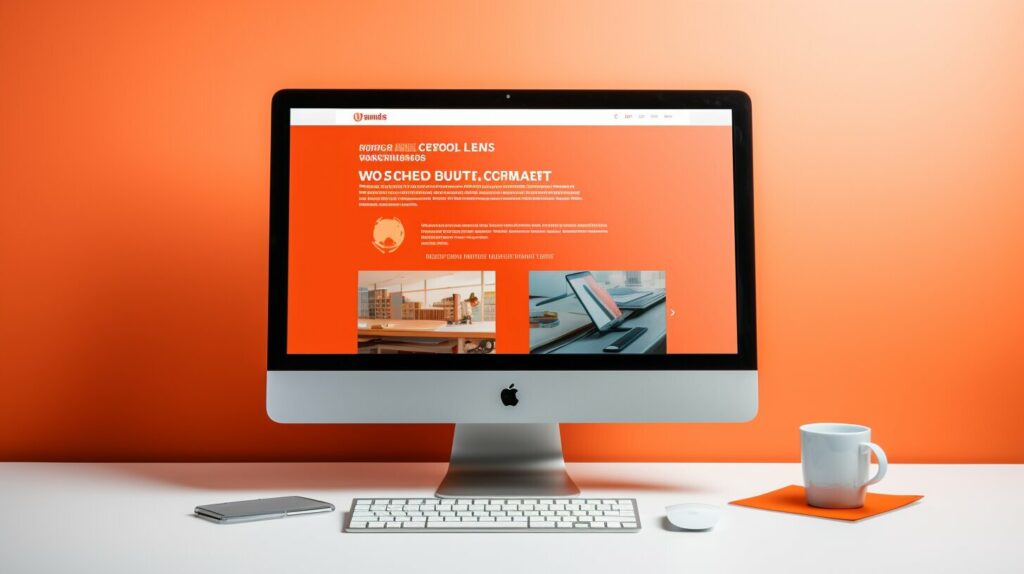
Optimizing Landing Pages for Mobile Users
With the growing number of mobile users, it is essential to ensure your landing pages are optimized for seamless mobile experiences. Mobile optimization is no longer a luxury but a necessity, as users increasingly rely on their smartphones and tablets to browse the internet. To maximize the effectiveness of your landing pages on mobile devices, here are some key considerations:
- Responsive Design: Make sure your landing pages are responsive, meaning they adapt to different screen sizes and resolutions. This ensures that your content is displayed properly and that users can easily navigate and interact with your landing page.
- Fast Loading Speed: Mobile users have shorter attention spans and expect pages to load quickly. Optimize your landing pages for speed by minimizing file sizes, leveraging browser caching, and reducing server response time.
- Thumb-Friendly Navigation: Design your landing pages with touch-friendly navigation elements. Use larger buttons and clear calls-to-action that are easy to tap with a thumb. Avoid small fonts and links that require precise clicking.
Additionally, consider the following tips to enhance the mobile experience:
- Streamline Content: Mobile screens are smaller, so it’s important to prioritize and condense your content. Focus on the key information and keep your messaging concise and engaging.
- Optimize Forms: Mobile users may find it cumbersome to fill out long forms on small screens. Simplify your forms by only asking for essential information and using auto-fill features whenever possible.
By optimizing your landing pages for mobile users, you can ensure a smooth and enjoyable experience, ultimately leading to higher conversions and business success.
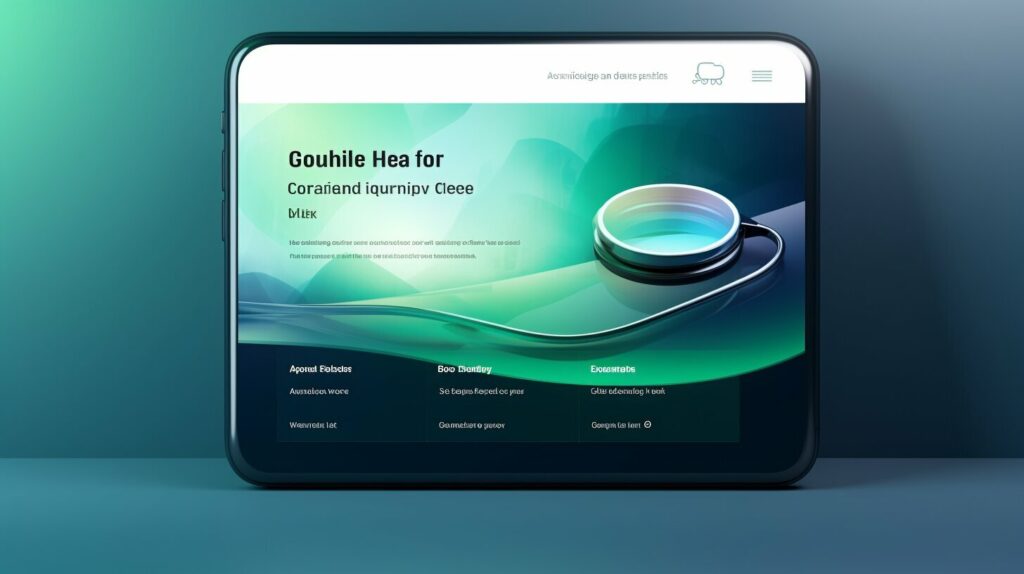
| Benefits of Mobile Optimization |
|---|
| Improved User Experience |
| Increase in Conversions |
| Better Mobile Search Rankings |
| Enhanced Brand Perception |
| Higher Customer Satisfaction |
Adapting your landing pages to the mobile landscape is crucial in today’s digital age. By implementing mobile optimization strategies, you can ensure that your landing pages are accessible and user-friendly across all devices, leading to improved engagement and conversions.
Tips for Creating High-Converting Landing Pages
By implementing proven strategies and best practices, you can create landing pages that effectively drive conversions and support your business objectives. To maximize the impact of your landing pages, consider the following tips:
- Craft a benefit-focused headline: Your headline should clearly communicate the value proposition of your offer and entice visitors to take action. Use compelling language that speaks to the needs and desires of your target audience.
- Choose an image that illustrates the offer: Visuals are powerful in capturing attention and conveying your message. Select an image that is relevant to your offer and aligns with your branding to enhance the overall impact of your landing page.
- Write compelling copy: Your copy should be persuasive and concise, highlighting the key benefits of your offer. Use engaging language, address pain points, and clearly explain how your product or service can solve your audience’s problems.
- Include the lead form above the fold: Make it easy for visitors to convert by placing the lead form prominently on your landing page. This ensures that users can quickly and easily fill out the form without having to scroll.
- Add a clear and standout call-to-action (CTA): Your CTA should be visually striking and clearly communicate the desired action. Use actionable language that compels users to take the next step, such as “Sign Up Now” or “Get Your Free Trial.”
- Provide a relevant offer: Tailor your offer to align with the needs and interests of your target audience. Whether it’s a free trial, a discount, or exclusive content, make sure your offer provides value and motivates visitors to convert.
Following these tips will help you create high-converting landing pages that drive results for your business. Remember to continuously test and optimize your landing pages to further improve their performance and maximize your conversion rates.
| Common Mistakes to Avoid | Solution |
|---|---|
| Lacking relevant copy | Clearly communicate the value proposition and benefits of your offer |
| Weak call-to-action | Create a strong and compelling CTA that encourages action |
| Not including customer reviews | Showcase positive reviews and testimonials to build trust and credibility |
| Poor visuals or unclear value proposition | Use high-quality visuals and clearly communicate the unique value your offer provides |
Examples of Great Landing Pages
Looking for inspiration? Here are a few examples of well-designed landing pages that effectively capture attention and drive conversions:
- Apple’s iPad Pro page: This landing page showcases stunning visuals and highlights the key features and benefits of the product. The clean design and persuasive copy create a compelling user experience.
- Reedy’s book launch page: With its captivating headline, clear call-to-action, and positive customer reviews, this landing page effectively promotes a book launch and encourages visitors to make a purchase.
- Shopify’s ecommerce course page: This landing page offers a valuable resource for aspiring ecommerce entrepreneurs. The well-structured layout, informative content, and engaging visuals make it a standout example of an effective landing page.
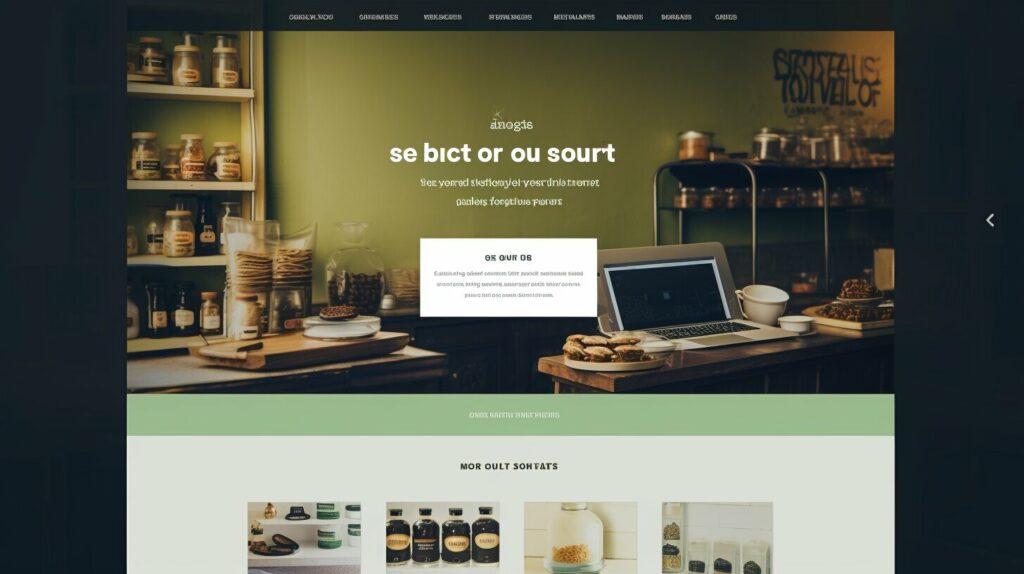
Types of Landing Pages and Their Functions
Understanding the different types of landing pages and their unique functions will help you choose the most suitable option for your business goals. Here are the main types of landing pages:
Lead Generation Landing Pages
Lead generation landing pages are designed to capture user information, such as email addresses, in exchange for a valuable offer. These pages typically include a lead form where visitors can input their details. By offering something of value, like a free ebook or a discount code, you can entice visitors to provide their contact information, allowing you to follow up with them and nurture them into potential customers.
Product Detail Pages
Product detail pages focus on showcasing and providing detailed information about a specific product or service. These pages often include high-quality images, descriptions, features, and specifications. By highlighting the key benefits and addressing potential customer concerns, product detail pages aim to drive conversions by convincing visitors to make a purchase or take the desired action.
Squeeze Pages
Squeeze pages have one primary goal: to capture visitor information. These pages typically feature a simple and concise design with minimal distractions. The focus is on persuading visitors to provide their contact information by offering a compelling offer or incentive. Squeeze pages are often used for targeted campaigns and are effective in growing your email list or collecting leads for future marketing efforts.
By understanding the functions of each type of landing page, you can strategically choose the right one for your specific business objectives. Whether you want to generate leads, promote a product, or collect customer information, selecting the appropriate landing page type will significantly impact your campaign’s success.
| Landing Page Type | Function |
|---|---|
| Lead Generation Landing Pages | Capture user information in exchange for a valuable offer |
| Product Detail Pages | Showcase and provide detailed information about a specific product or service |
| Squeeze Pages | Focus on capturing visitor information with a simple and concise design |
Common Mistakes to Avoid in Landing Page Design
By being aware of common design mistakes, you can ensure your landing pages are professional, visually appealing, and compelling. Avoiding these mistakes will help maximize your chances of converting visitors into valuable leads or customers.
1. Lack of relevant copy
One of the biggest mistakes in landing page design is not providing enough relevant information to your visitors. A landing page should clearly and concisely communicate the value proposition of your offer and answer any questions or concerns that potential customers may have. By providing compelling and persuasive copy, you can build trust and convince visitors to take action. Keep the copy concise and benefit-focused, highlighting how your product or service can solve their problems or meet their needs.
2. Weak call-to-action (CTA)
A strong and clear call-to-action is essential for driving conversions on your landing page. Your CTA should clearly communicate what action you want visitors to take, whether it’s filling out a form, making a purchase, or signing up for a newsletter. Make sure your CTA is prominently displayed, using contrasting colors to make it stand out. Use action-oriented language to encourage visitors to take the desired action and consider creating a sense of urgency to prompt immediate action.
3. Poor visuals or unclear value proposition
Visual elements play a crucial role in capturing the attention and interest of visitors on a landing page. Poor quality images or irrelevant visuals can detract from the overall impression and credibility of your offer. Choose high-quality and relevant images that resonate with your target audience and reinforce your value proposition. Additionally, make sure your value proposition is clear and unmistakable. Clearly articulate the benefits and unique selling points of your product or service to compel visitors to engage further.
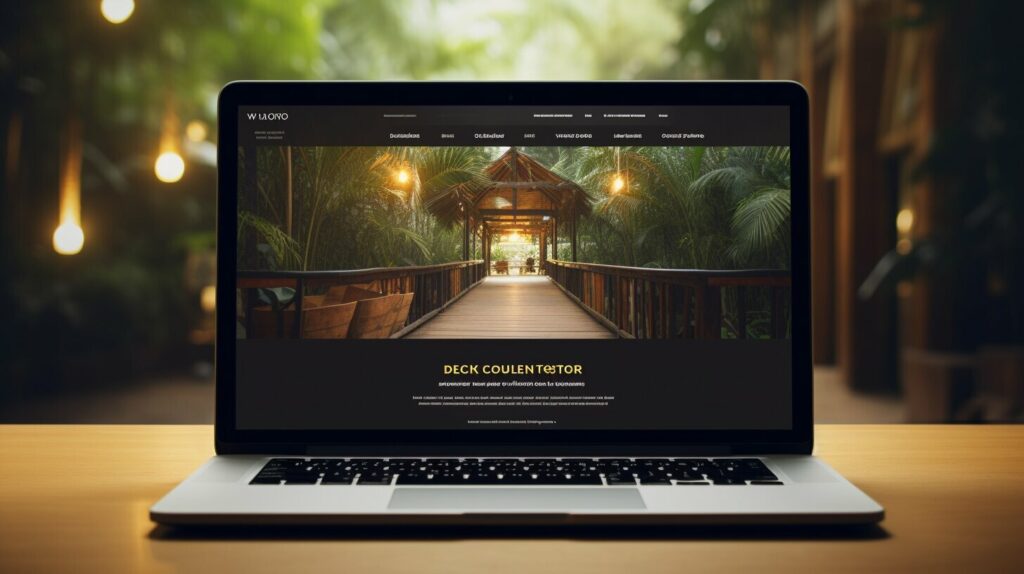
Finally, it’s crucial to ensure that your landing page design is responsive and mobile-friendly. With more people accessing the internet through mobile devices, having a responsive design is a must. Test your landing page on different devices to ensure it looks and functions well across various screen sizes. A visually appealing and user-friendly landing page will enhance the user experience and increase the likelihood of conversions.
In summary, by avoiding common landing page design mistakes and implementing best practices, you can create landing pages that captivate your audience, effectively communicate your value proposition, and drive conversions.
| Mistake | Impact | Solution |
|---|---|---|
| Lack of relevant copy | Leads to confusion and lack of trust | Provide clear and concise copy that highlights the value proposition |
| Weak call-to-action | Low conversion rates and missed opportunities | Create a strong, clear, and compelling CTA |
| Poor visuals or unclear value proposition | Fails to engage and persuade visitors | Choose high-quality, relevant images and clearly communicate your value proposition |
Examples of Great Landing Pages
Examining successful landing pages from renowned brands can inspire your own designs and help you understand what works in the industry. These examples showcase effective landing page elements such as compelling visuals, persuasive copy, and clear call-to-action buttons. Let’s take a closer look at some standout landing pages:
Apple’s iPad Pro Page
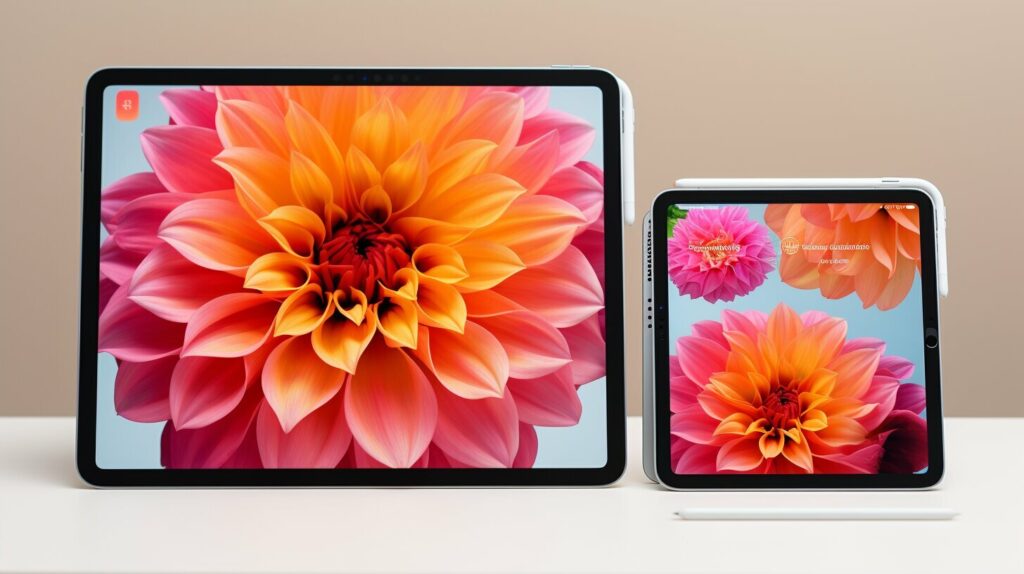
Apple’s landing page for the iPad Pro is a masterclass in simplicity and elegance. The page features a stunning image of the product, showcasing its sleek design and advanced features. The headline clearly states the key benefit of the iPad Pro – “Your next computer is not a computer.” The copy highlights the tablet’s versatility, power, and portability, while the call-to-action button prompts visitors to “Learn More.” The page uses whitespace effectively, allowing the product to shine and providing a clean and focused user experience.
Reedy’s Book Launch Page
Reedy, a popular author, successfully captured attention with an engaging landing page for their latest book launch. The page features an eye-catching book cover image, accompanied by a compelling headline that piques curiosity – “Discover the secrets behind a New York Times bestseller.” The copy provides a brief overview of the book’s plot and promises readers an exciting and captivating story. The call-to-action button invites visitors to “Get Your Copy Now,” creating a sense of urgency. The use of customer reviews and testimonials adds social proof and credibility to the page, making it more persuasive and enticing for potential readers.
Shopify’s Ecommerce Course Page
Shopify, a leading ecommerce platform, showcases its expertise and value through a well-designed landing page for its ecommerce course. The page incorporates an appealing image that represents the course’s subject matter – a laptop and shopping bags, symbolizing online retail success. The headline emphasizes the tangible benefits of the course – “Build a profitable online store with Shopify.” The copy highlights the course’s comprehensive content and expert guidance, while the call-to-action button encourages visitors to “Enroll Now.” The use of a testimonial and a visually appealing table comparing the course’s features adds credibility and helps visitors make an informed decision.
These examples of great landing pages demonstrate the power of effective design, compelling copy, and strategic use of visuals. When creating your own landing page, draw inspiration from these successful examples and consider how you can adapt their strategies to suit your business and target audience. Remember to prioritize clarity, relevance, and a seamless user experience to maximize your landing page’s impact and drive conversions.
Conclusion
Effective landing pages are a powerful tool to drive business success, and by implementing the best practices discussed in this article, you can elevate your digital marketing efforts. Landing pages provide a sneak peek into your business and engage new visitors, offering targeted messaging and simplifying campaign measurement. They also provide design flexibility, allowing for easy testing and changes to optimize performance.
By creating an effective landing page, you can increase conversion rates and make a good first impression. Craft a benefit-focused headline and choose an image that illustrates the offer to capture attention. Write compelling copy that speaks directly to your target audience and include the lead form above the fold for easy access. A clear and standout call-to-action is essential to guide visitors towards the desired action, and providing a relevant offer will further incentivize conversions.
When designing your landing page, keep it simple and use contrasting colors to make key elements stand out. Feature compelling content and visuals that effectively communicate your message and ensure mobile compatibility to reach a wider audience. Optimize your landing page for search engines to drive organic traffic, and don’t forget to use a thank you page to acknowledge completed conversions and continue engaging with your visitors.
It’s important to understand the different types of landing pages and their functions. Lead generation pages are focused on capturing potential customer information, while click-through pages aim to guide visitors to another page for further engagement. Product detail pages provide in-depth information about a specific product or service, and squeeze pages are designed to collect email addresses or other contact details. By utilizing the appropriate type of landing page for your marketing objectives, you can maximize the effectiveness of your campaigns.
Finally, avoid common mistakes that can hinder the performance of your landing pages. Ensure that your landing page has relevant and compelling copy, a strong call-to-action, and customer reviews to build trust and credibility. Use high-quality visuals and clearly communicate the value proposition to entice visitors. Remember to keep the page navigation-free, optimize for mobile users, and create a seamless user experience.
By following these best practices and taking inspiration from great landing page examples, such as Apple’s iPad Pro page, Reedy’s book launch page, and Shopify’s ecommerce course page, you can create impactful landing pages that drive conversions, enhance your brand presence, and ultimately boost your business success.
FAQ
Why are landing pages important for business success?
Landing pages are crucial for boosting business success as they increase conversion rates, offer targeted messaging, simplify campaign measurement, provide design flexibility, and allow for easy testing and changes.
What are the benefits of effective landing pages?
Effective landing pages offer increased conversion rates, make a good first impression, provide direct contact with website visitors, raise brand awareness, add credibility, support visitors, and reach mobile users.
What are the essential elements of an effective landing page?
An effective landing page should have a benefit-focused headline, an image that illustrates the offer, compelling copy, a lead form above the fold, a clear and standout call-to-action, and a relevant offer.
How should I craft compelling copy for landing pages?
When crafting copy for landing pages, focus on benefits, use persuasive language, and keep the content concise and engaging. Tailor the messaging to the target audience and highlight the value proposition.
What should I consider when designing a call-to-action?
To design a winning call-to-action, ensure it stands out visually, use action-oriented language, clearly communicate the desired action, and place it strategically on the landing page to maximize visibility.
How can I optimize my landing pages for mobile users?
To optimize landing pages for mobile users, make sure they have a responsive design that adapts to different screen sizes. Use mobile-friendly layouts, fonts, and images, and ensure fast loading times.
What are some tips for creating high-converting landing pages?
Tips for creating high-converting landing pages include only asking for necessary information in the lead form, removing navigation to eliminate distractions, making the page responsive, optimizing for search engines, and using a thank you page for follow-up actions.
What are the different types of landing pages and their functions?
Different types of landing pages include lead generation pages used to capture visitor information, click-through pages used to drive visitors to another page, product detail pages that provide in-depth information about a specific product, and squeeze pages used to collect email addresses.
What are some common mistakes to avoid in landing page design?
Common mistakes to avoid in landing page design include lacking relevant copy, having a weak call-to-action, not including customer reviews, and having poor visuals or an unclear value proposition.
Can you provide examples of great landing pages?
Sure! Examples of great landing pages include Apple’s iPad Pro page, Reedy’s book launch page, and Shopify’s ecommerce course page. These pages showcase effective design, compelling copy, and clear calls-to-action.

